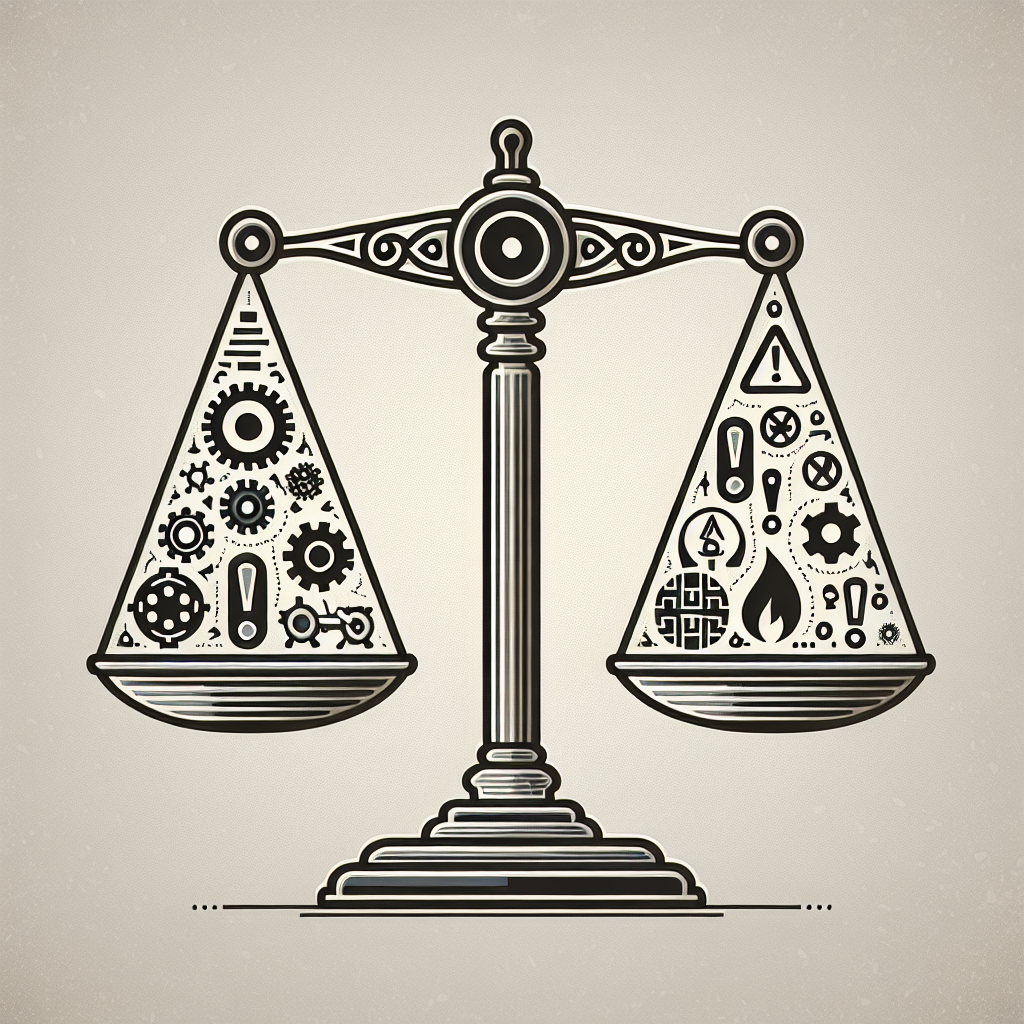Artificial Intelligence (AI) technology has rapidly advanced in recent years, with applications in numerous industries such as healthcare, finance, and transportation. While AI has the potential to revolutionize these industries and improve efficiency, there are also potential risks associated with the widespread use of AI technology. It is crucial for organizations and individuals to understand these risks in order to mitigate potential negative consequences.
One of the primary risks associated with AI technology is the potential for bias in algorithms. AI systems are trained on large datasets, which can contain biases that are present in the data. If these biases are not identified and addressed, they can be perpetuated and amplified by the AI system, leading to discriminatory outcomes. For example, a hiring algorithm that is trained on historical data may inadvertently discriminate against certain groups based on factors such as race or gender.
Another risk of AI technology is the potential for errors or malfunctions in AI systems. AI systems are complex and can be prone to errors, which can have serious consequences in critical applications such as healthcare or autonomous vehicles. For example, a self-driving car that makes a mistake in identifying a pedestrian could lead to a serious accident.
Privacy and security concerns are also significant risks associated with AI technology. AI systems often collect and analyze vast amounts of data, which can include sensitive personal information. If this data is not properly protected, it can be vulnerable to hacking or misuse, leading to privacy breaches or identity theft. Additionally, the use of AI technology in surveillance systems raises concerns about the erosion of privacy rights and the potential for abuse by governments or other entities.
Ethical considerations are another important risk of AI technology. As AI systems become more sophisticated and autonomous, questions arise about the ethical implications of their actions. For example, should an autonomous weapon be allowed to make life-or-death decisions without human intervention? How should AI systems be held accountable for their actions? These ethical questions are complex and require careful consideration to ensure that AI technology is used in a responsible and ethical manner.
In order to mitigate these risks, organizations and individuals must take proactive steps to address potential issues related to AI technology. This includes implementing robust testing and validation processes to ensure the accuracy and reliability of AI systems, as well as conducting regular audits to identify and address biases in algorithms. Additionally, robust data protection measures should be put in place to safeguard sensitive information and prevent unauthorized access.
It is also important for organizations to establish clear guidelines and policies around the ethical use of AI technology. This includes defining principles for the responsible use of AI, as well as mechanisms for accountability and transparency. By setting clear ethical standards and holding AI systems to these standards, organizations can help to ensure that AI technology is used in a manner that aligns with societal values and norms.
In conclusion, while AI technology has the potential to bring about significant benefits, there are also potential risks associated with its widespread use. By understanding these risks and taking proactive steps to address them, organizations and individuals can harness the power of AI technology while minimizing potential negative consequences.
FAQs:
Q: What are some examples of bias in AI algorithms?
A: Examples of bias in AI algorithms include discriminatory outcomes in hiring algorithms, predictive policing systems that disproportionately target minority communities, and healthcare algorithms that provide lower-quality care to certain demographic groups.
Q: How can organizations address bias in AI algorithms?
A: Organizations can address bias in AI algorithms by implementing robust testing and validation processes, conducting regular audits to identify and address biases, and ensuring that diverse teams are involved in the development and testing of AI systems.
Q: What are some examples of errors or malfunctions in AI systems?
A: Examples of errors or malfunctions in AI systems include self-driving cars that make mistakes in identifying objects on the road, chatbots that provide incorrect information to users, and healthcare algorithms that misdiagnose patients.
Q: How can organizations mitigate the risk of errors or malfunctions in AI systems?
A: Organizations can mitigate the risk of errors or malfunctions in AI systems by implementing rigorous testing and validation processes, using redundancy and fail-safe mechanisms in critical applications, and ensuring that humans are able to intervene in case of errors.
Q: What are some examples of privacy and security concerns related to AI technology?
A: Examples of privacy and security concerns related to AI technology include data breaches that expose sensitive personal information, the use of AI in surveillance systems that infringe on privacy rights, and the potential for AI systems to be hacked or manipulated.
Q: How can organizations protect data privacy and security in the use of AI technology?
A: Organizations can protect data privacy and security in the use of AI technology by implementing robust data protection measures, such as encryption and access controls, conducting regular security audits, and ensuring compliance with data protection regulations.

